Considering 1 new client for Q2 2026
Customer Journeys help us to visualize the experience of our customers. But how can you leverage this information and decide on what to do next?
By
Philip Wallage
•
Dec 25, 2025
Just like we're being overwhelmed with information, we are also flooded with new opportunities in our day-to-day work. All these exciting new challenges, but tackling them all won't bring us closer to our goals. How do we decide what to do next and actually achieve our goals?
Before we continue, let's take a breather.
Okay, stop. First, let's see where we came from. Your organization wasn't born yesterday; how well do you know its goals, the reason for existence and its WHY?
If we don't understand why we're doing what we're doing, it can be tough to decide where to go next. Let's first identify the WHY. Simon Sinek's 'Start with why' has become one of the most popular (and valuable) concepts over the last few years. If you haven't seen it, please do check out the link. It's worth your time. Since it's not the main topic of this article, I'll only share a few examples:
IKEA wants to create a better everyday life for the many people.
Tesla wants to accelerate the world's transition to sustainable energy.
TED keeps it very simple: Spread ideas.
Uber: Transportation as reliable as running water. Everywhere for everyone.
Spotify wants to inspire human creativity by enabling a million artists to live their art and a billion people to enjoy it and be inspired by it.
Airbnb: To connect millions of people in real life all over the world through a community marketplace -So that you can belong anywhere.
Your organization wasn't born yesterday; how well do you know its goals, the reason for existence and its WHY?
So what's stopping you? Define Business Challenges!
What is keeping you from fulfilling this mission statement?
Are you reaching enough people?
Is the process of your product or service efficient enough?
Does your customer support deliver the values derived from the mission statement?
There are plenty of business challenges you can identify within your organization. A good business challenge:
Defines what you aim to achieve
Specifies by when you want to achieve the goal
Is a smaller part of the company-wide strategy
Focusses you and your team around the same business objective
We use a workshop called a Lightning Decision Jam to identify and prioritize these business challenges quickly. In a one-hour workshop, you can easily identify and prioritize the top 5 of the business challenges that should be solved.
Defining Stakeholders
Now that we know which business challenge we want to solve, we need to think about the stakeholders (user/personas/actors) involved with this challenge. Besides your customers, this list could include your support team, partners, suppliers, sales- & marketing people or even the development team. It all has to do with your company and the business challenge you'd like to solve. You can already place the stakeholders in a 2x2 matrix:

Qualitative & Quantitative Research
Now that you have identified the stakeholders relevant to your challenge. Now, it's time to discover relevant information to help to solve your challenge. We like to start with a very high-level outline of their journey.
You can use a classic AIDA (Attention, Interest, Desire, Action) model or a more straightforward approach such as Discover - Learn - Use. We use this format during our Design Sprints to map a journey and choose a target to focus on during the Design Sprint.
Qualitative Research
To understand what users think, we like to perform 1-on-1 interviews as our Qualitative Research. They are a valuable source of information for creating a Customer Journey and learning more about workflows, bottlenecks and how users perceive them.
Without going into too much detail, a few tips:
Set a goal for the interview
Make the person feel as comfortable as possible
Prepare questions before the interview
Ask followup questions based on your research goals
Avoid vague, closed or leading questions
For each Persona, decide who you'd like to interview.
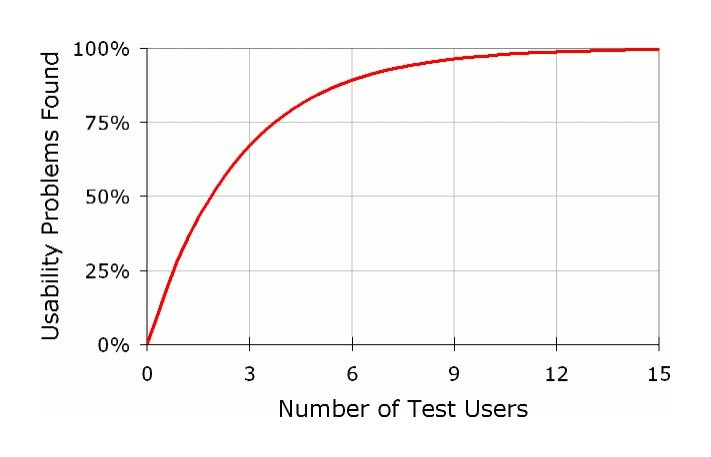
We always get the question, 'How many people do we need to interview?' The short answer: Five. The Nielsen Norman Group wrote an article called 'Why You Only Need to Test with 5 Users'. They explain that with five user tests, they cover around 85% of the prototype's feedback.
When we're doing remote interviews, our client is right there with us. During the interview, they mute their mic and turn off their webcam. If they have a question, they can send us a private message, and we'll convey the question during the interview.
Quantitative Research
As a cherry on top, you can quantitatively confirm your qualitative research findings. Perhaps this sounds more complicated than it really is. What it means is that you've learned a lot of valuable information from your one-on-one interviews. But you might still feel uncertain about your findings. You could transform your interviews' results into a questionnaire that you could send to a broader audience.
Do make sure that they match the persona types to keep your information as pure as possible. To give you an example; Perhaps you divided a target audience into a 'Beginner vs. Advanced User' 2x2 matrix. You could try to confirm this in a '# years of experience' question in a form. You might discover that 95% of your audience fits that Beginner persona.
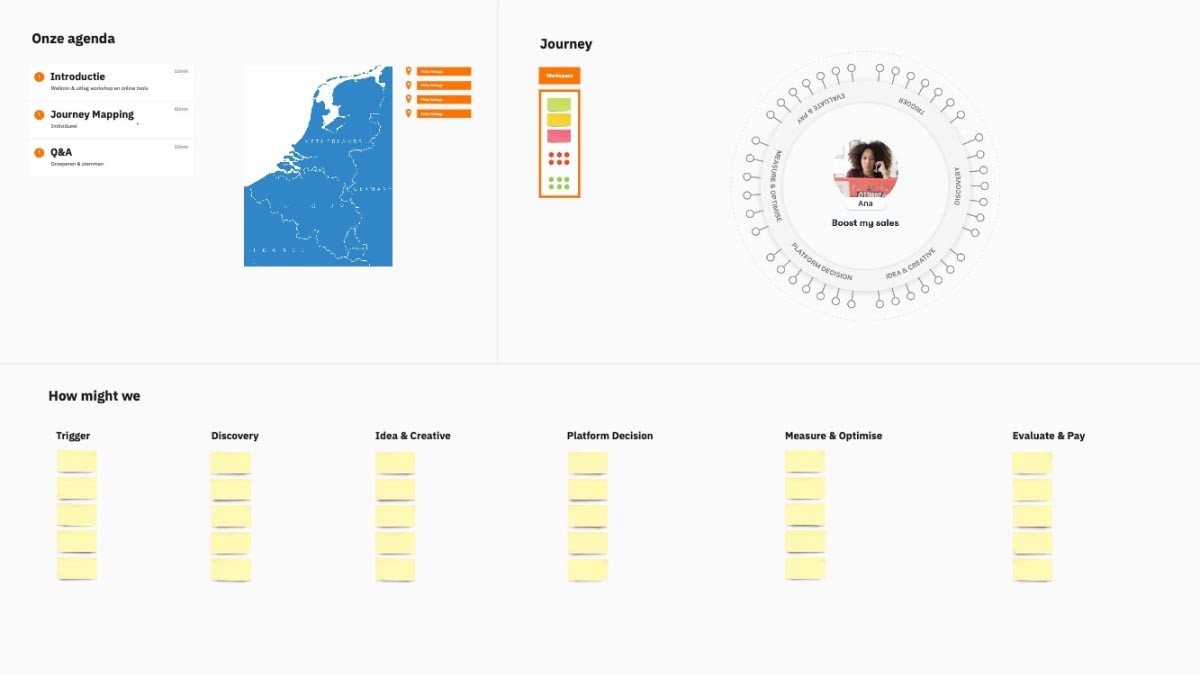
Creating the Visual Customer Journey
Together with our clients' team, we work in either Mural or Miro during the interview. These are online whiteboard tools that allow us to gather and share our findings. While the interviewee and I discuss their journey (and their experience traveling it), our client actively participates. Whenever they hear a negative experience, they write it on a sticky. They use an incredibly powerful template for this, called "How Might We"—every sticky start with 'HMW.'
The idea behind it is
"How" suggests that we do not yet have the answer. "How" helps us set aside preconceived ideas. "How" allows us to explore various endeavors instead of merely executing what we "think" the solution should be.
"Might" emphasizes that our responses may only be possible solutions, not the only solution. "Might" also allows for exploring multiple possible solutions, not settling for the first that comes to mind.
"We" immediately brings in the element of a collaborative effort. "We" suggests that the idea for the solution lies in our collective teamwork.
HMW Examples
During the interview, you might make the following discovery:
An experienced user NEEDS TO work faster with our software BECAUSE he uses it 8 hours a day.
HMW help our advanced users to save time?
HMW make our advanced users aware of our shortkeys?
HMW help our advanced users to automate their workflow to save time?
Creating a single Main Journey in TheyDo
After multiple interviews, we have just as many filled documents in Mural/Miro. You can either create individual User Journeys in theydo.io or combine them first into a single Main Journey.
Combining them into a single Main Journey can be quite challenging. The first thing we do is gather all the touchpoints per phase.
A phase is a chapter in the Customer Journey. It can include multiple touchpoints.
A touchpoint is a meaningful experience in the Customer Journey.
We remove the double ones and try to create a chronological order. Sometimes it takes a little grey matter and empathy to find commonalities in the touchpoints.
We create one large document in Miro/Mural, where we merge multiple interviews in a single document. This is our final step before implementing this information in theydo.io.
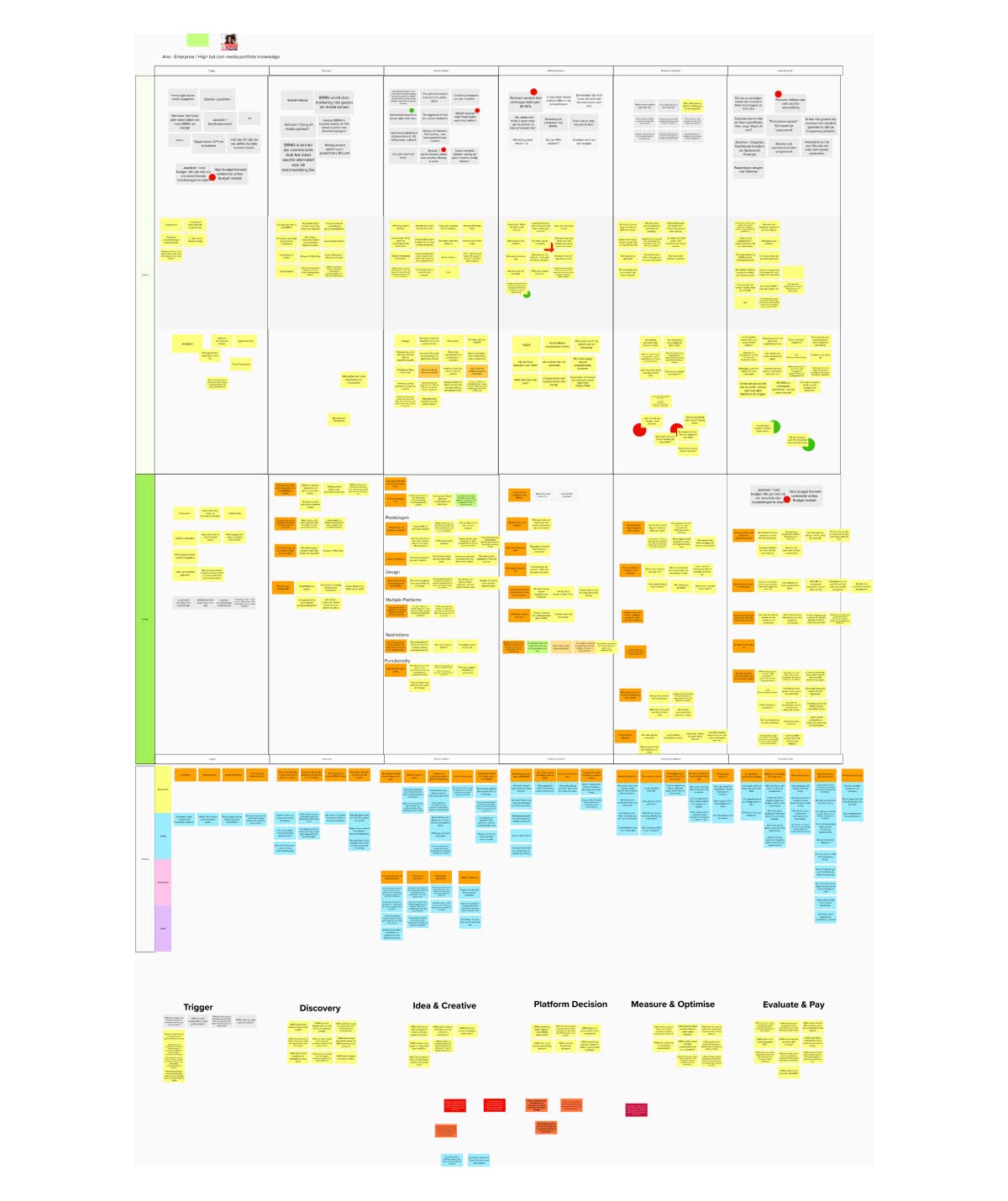
Creating the visual Customer Journey in Theydo.io
In theydo.io - we start by writing out the Business Challenge and creating the relevant Personas. For each interviewed Persona we make a new Customer Journey. We create the phases, as discussed in the interview.
Now, it's merely a matter of migrating the touchpoints from Mural/Miro to theydo.io. This is a bit of manual labor but very much worth it. Not only do we write out the touchpoints, but we label it as a positive/neutral/negative experience.
A touchpoint can have additional information attached to it. For example:
Observations
Quotes
External links
Attachments
Relations to other persona/touchpoints
Solutions
By selecting multiple touchpoints, you can define a problem area. As the name suggests, it is an area that is troublesome and relevant to improve. Of course, make sure that it is appropriate to the Business Challenge, which you are solving.
The HMW's are an invaluable source of inspiration when it comes to Problem Areas and Solutions.
In TheyDo, within a Journey, you can see the defined Problem Areas and which touchpoints are related. By figuring out which Problem Area needs to be solved first, you can start working on Solutions.
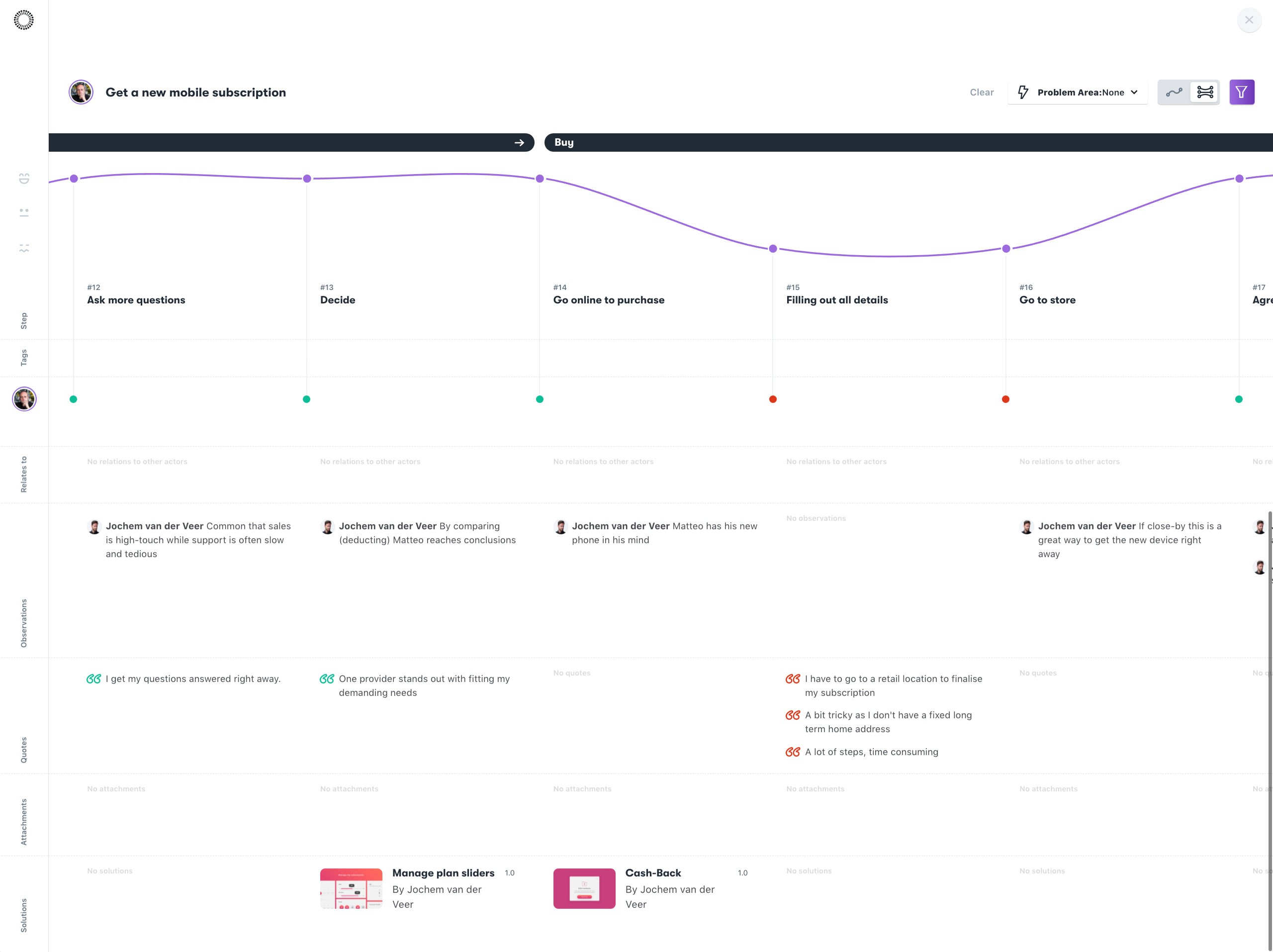
Solutions
During our Lightning Decision Jam workshop, everyone has a couple of minutes to write down possible solutions to HMW's. By a simple dot-voting, we prioritize these solutions. TheyDo employs a format called "Desirability Feasibility Viability."
Desirability: Are We Solving for the Right Pain Point?
Feasibility: Are We Building on our Core Operational Strengths?
Viability: Does Our Solution Contribute to Long-Term Growth?
Scoring ideas on these three values give you an average that allows you to rank solutions easily. And congratulations! There you have it. A single backlog with the following:
You understand why your company does what it does.
You understand the #1 Business Challenge that is keeping you from achieving this.
By talking to your stakeholders, you now understand their Customer Journey and Problem Areas.
By creating multiple solutions and ranking them, you now have an ordered list of the most viable solutions to your #1 Business Challenge. #LETSGO
The number one solution would qualify itself for a Design Sprint: A 4-day process for rapidly solving big challenges, creating new products, or improving existing ones. It compresses potentially months of work into a few days.
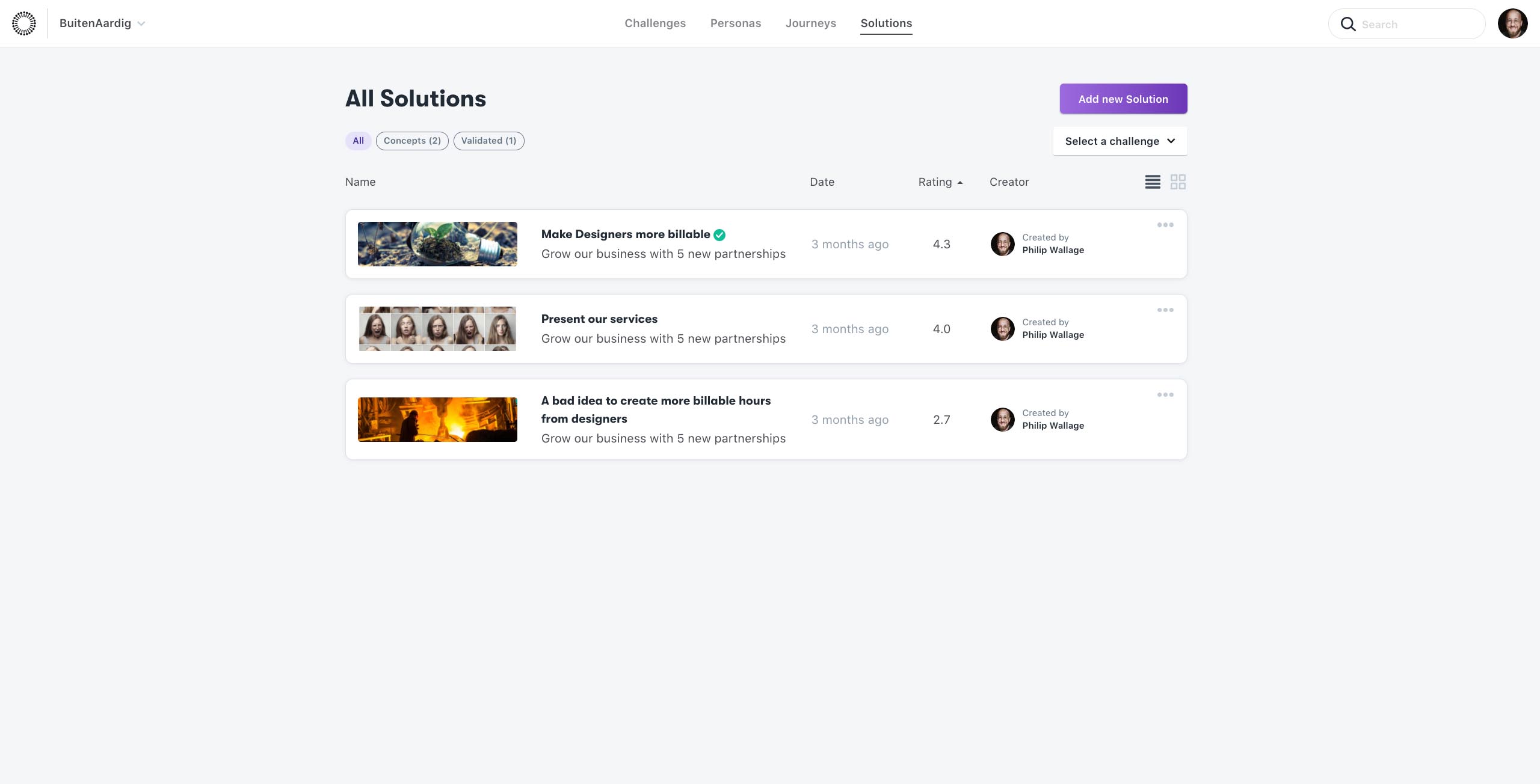
Adoption
So, a short recap:
Why do we do what we do?
What is keeping us from doing this?
Defining the Business Challenge
Defining and Interviewing Stakeholders
Creating a visual Customer Journey
Defining Problem Areas in the Customer Journey
Creating and prioritizing new solutions
Start with a Design Sprint
By having a visual representation of your Personas, Customer Journey, Problem Areas and Solutions in TheyDo, you can now easily share this within your organization.
To improve adoption, we try to include employees of our clients in the interviews with the Stakeholders. By having them on-board during the interviews, everything becomes a lot more alive!
If you like to learn more about Customer Journeys and more, check out and join our FREE Community!
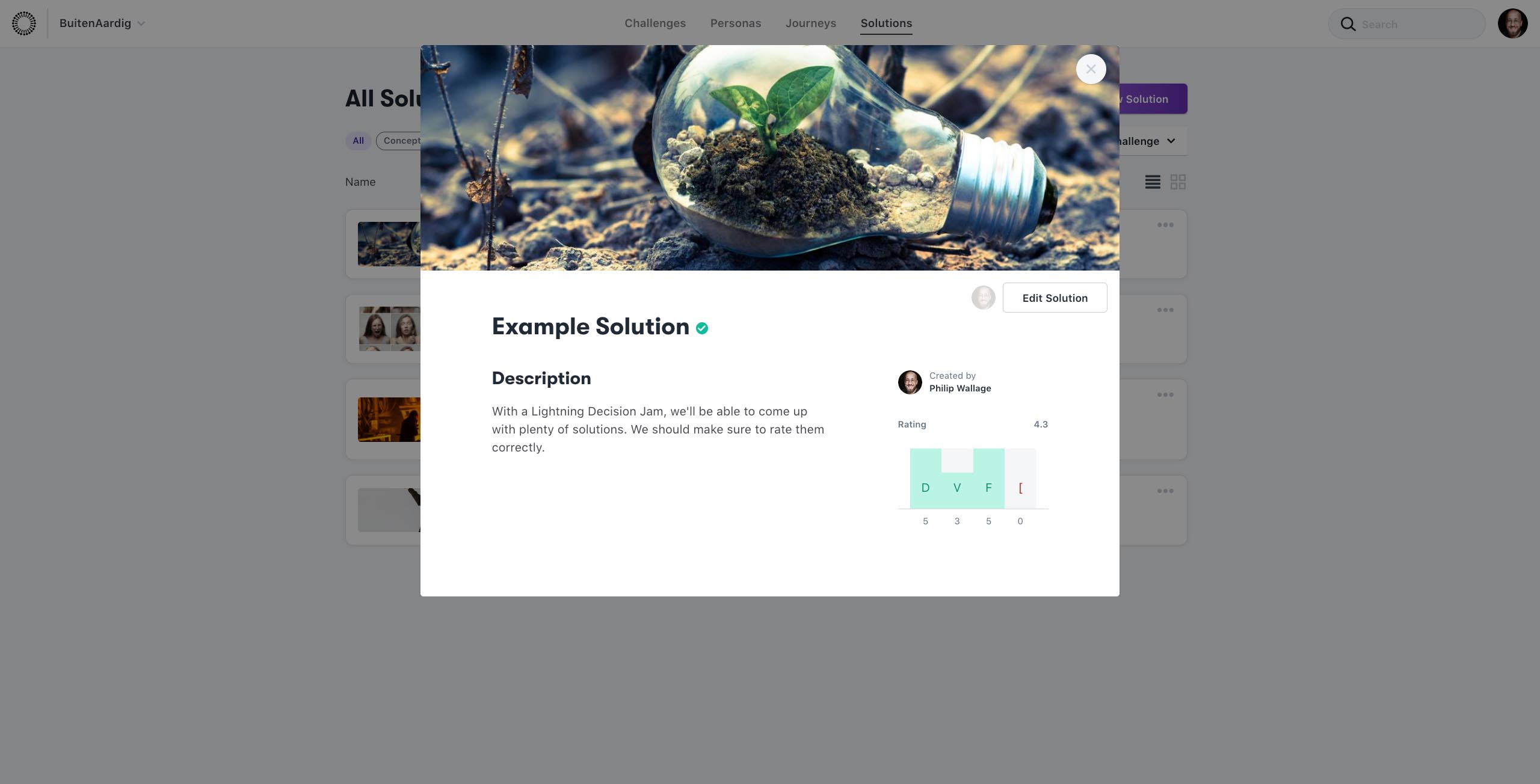
Latest Blog Posts
More articles
Top Reasons Why Customers Abandon Checkout and How to Resolve Them
Discover key reasons why customers abandon checkout and actionable strategies to improve your conversion rates. Read the article to enhance your sales!
By
Philip Wallage
•
Dec 25, 2025
European Accessibility Act Ecommerce: Complete Compliance Guide for Online Retailers
Discover key strategies for ensuring your ecommerce site complies with the European Accessibility Act. Read the article to enhance your online inclusivity.
By
Philip Wallage
•
Dec 25, 2025
Abandoned Cart: Best Strategies to Recover Lost Sales
Discover practical strategies to decrease abandoned cart rates and increase sales. Read the article for actionable tips to enhance your e-commerce success.
By
Philip Wallage
•
Dec 25, 2025



